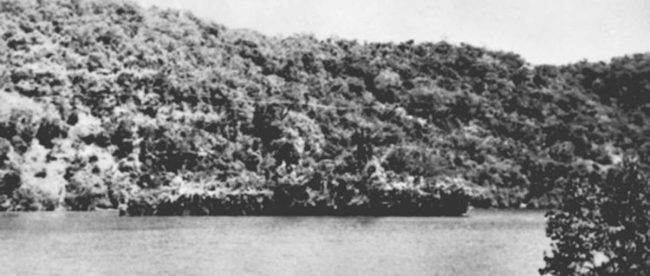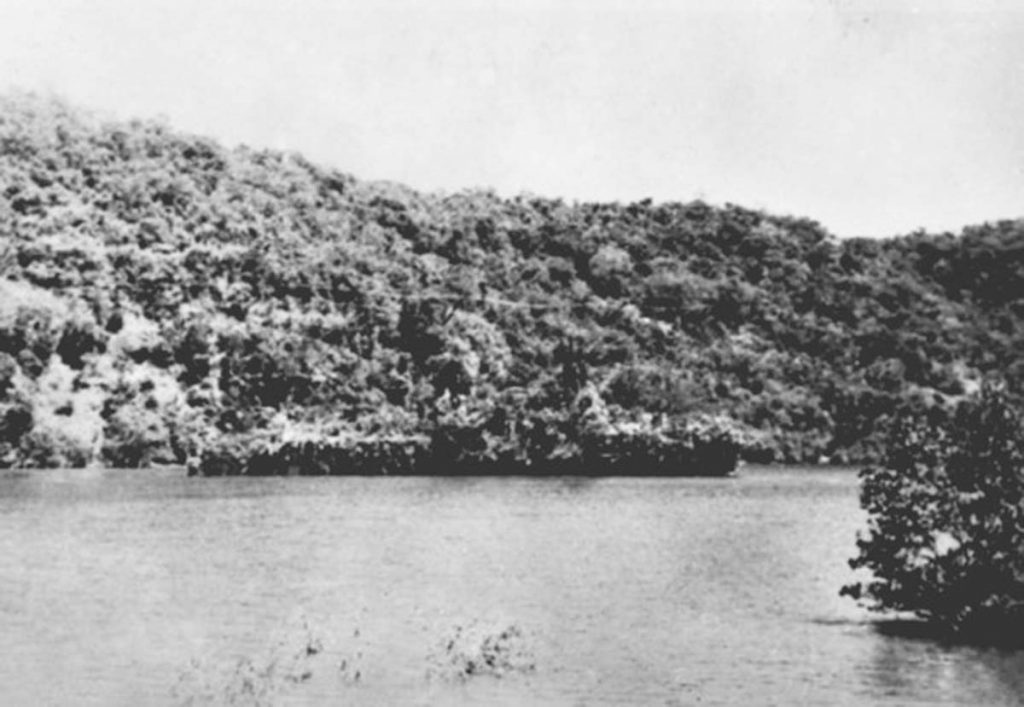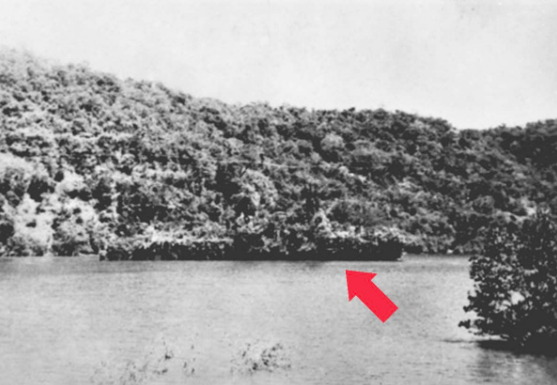The Island That Floated To Safety


TK
The Java Sea — here’s a map — is a large body of water sitting in the middle of Indonesia. It’s home to a lot of islands, many of which are untamed jungles which barely peek out of the water, like the one pictured above. And in February of 1942, it was also home to one of the biggest Japanese naval victories of World War II. The Battle of the Java Sea was a short but decisive skirmish; the Imperial Japanese Navy sank five allied warships and killed more than 2,000 Allied sailors, losing only three dozen men of their own in the process. The victory helped Japan establish a foothold over the islands in the region for months to come.
The Allied losses in the Java Sea were so significant that command ordered all ships in the neighboring areas to retreat to Australia. Unfortunately for four of the remaining Dutch ships, that proved difficult. The quartet came under Japanese fire in the subsequent days; three of the four failed to make it out of the immediate region. The fourth, a minesweeper called the HNLMS Abraham Crijnssen, survived but seemed doomed. A support ship with a specific, niche purpose, the Crijnssen simply wasn’t suited for open-sea warfare. It was slow, it wasn’t well-armed, and it was easy for Japanese bombers to see while flying overhead.
But the 45-man crew didn’t give up. Unable to fix the first two problems, they set out to address that last one. And as you can see in the picture above — or, more accurately, as you can only kind of see — they succeded. Let’s look at that picture again, but with some help.

See it, kind of floating offshore of the bigger landmass?
That’s no island. It’s the Crijnssen, just with an extreme amount of camouflage. To avoid being spotted, it became part of the landscape. War History Online explains: “To achieve the seemingly impossible feat of turning a ship into a geographical feature, the 45 members of the crew stopped off on the nearest island and immediately began cutting down as much vegetation as they could.” The crew cut down a lot of trees, covering as much of the ship as possible. The rest — and it was very little — they painted to look like rocks, grass, or dirt. From above, and from a distance, the Crijnssen now looked like one of those many specks of land in and around the Java Sea.
There was one last problem, though: islands, typically, don’t move. But that was easily solved, as Business Insider notes: “the crew figured the best means of convincing the Axis powers that they were an island was to truly be an island: by not moving at all during daylight hours.” And it worked. On March 20th, about a month after the Battle of the Java Sea, the Crijnssen arrived in Western Australia, safe and sound. It was the first Allied ship to become an island, and as a result, it was the last Allied ship to escape the real Java islands safely.
Bonus fact: The large island south of the Java Sea is the island of Java itself. Although it’s only the size of North Carolina, it is home to more than 150 million people — and, if you believe famed explorer Marco Polo, it used to be home to some unicorns as well. In his writings, Polo noted that on the island, “there are wild elephants in the country, and numerous unicorns, which are very nearly as big.”
Unicorns, sorry to say, aren’t real. So what was Polo talking about? He continues: “They have hair like that of a buffalo, feet like those of an elephant, and a horn in the middle of the forehead, which is black and very thick.” He was describing the rhinoceros, an animal he’d never seen previously.
From the Archives: Razzle Dazzle: Another way to camo your navy.
